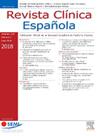西班牙高和极高心血管风险患者中降血脂药物的使用情况:欧洲SANTORINI研究西班牙亚人群随访一年
IF 1.7
4区 医学
Q2 MEDICINE, GENERAL & INTERNAL
引用次数: 0
摘要
评估2019年欧洲心脏病学会(ESC)和动脉粥样硬化学会(EAS)指南对使用降脂治疗(llt)影响的现实世界研究很少。本文显示了SANTORINI研究中西班牙亚群中LLT使用和低密度脂蛋白胆固醇(LDL-C)目标实现的基线和1年随访数据,并将其与没有西班牙参与者的欧洲队列进行比较。方法santorini是一项多国、前瞻性、非干预性研究。西班牙亚群涉及高达1018例心血管(CV)高风险和极高风险患者。结果在LDL-C数据集中的956例患者中,高风险和极高风险患者的平均LDL-C水平从基线(82.7±40.6 mg/dL)下降到1年随访(72.3±32.6 mg/dL)。在高风险(23.1%对27.3%)和极高风险(27.9%对37.0%)患者中,达到2019年ESC/EAS LDL-C目标的患者比例从基线时的26.5%增加到1年随访时的34.1%。在基线时未接受低密度脂蛋白治疗的患者开始接受低密度脂蛋白治疗或在接受低密度脂蛋白治疗的患者改变为联合治疗后,LDL-C目标的达到有所改善。在随访期间,7例患者死于CV原因,46例和24例分别发生至少1例4组分或3组分主要CV不良事件。结论:来自西班牙圣托里尼的随访数据显示,包括单药治疗和联合治疗在内,LLT的使用从基线开始增加。尽管有建议,但在常规临床实践中,最高CV风险的患者仍然没有接受最充分的LLT来降低LDL-C水平。本文章由计算机程序翻译,如有差异,请以英文原文为准。
Uso de fármacos hipolipemiantes en pacientes con alto y muy alto riesgo cardiovascular en España: un año de seguimiento de la subpoblación española del estudio europeo SANTORINI
Introduction
Real-world studies evaluating the impact of 2019 European Societies of Cardiology (ESC) and Atherosclerosis (EAS) guidelines on the use of lipid-lowering treatments (LLTs) are scarce. This manuscript shows baseline and 1-year follow-up data on LLT usage and low-density lipoprotein cholesterol (LDL-C) goal attainment in the Spanish subpopulation from SANTORINI study and put them in perspective with the European cohort without Spanish participants.
Methods
SANTORINI was a multinational, prospective, non-interventional study. The Spanish subpopulation involved up to 1018 patients at high and very high cardiovascular (CV) risk.
Results
Of 956 patients in LDL-C dataset, mean LDL-C levels decreased from baseline (82.7 ± 40.6 mg/dL) to 1-year follow-up (72.3 ± 32.6 mg/dL), in patients at high and very high risk. The percentage of patients who achieved 2019 ESC/EAS LDL-C goals increased from 26.5% at baseline to 34.1% at 1-year follow-up, in patients at high (23.1% versus 27.3%) and very high risk (27.9% versus 37.0%). Attainment to LDL-C targets improved while initiating treatment with a LLT in patients not receiving it at baseline or following change to a combination therapy in those who were receiving it. During the follow-up, seven patients died due to CV causes, and 46 and 24 had at least one four- or three-component major adverse CV events, respectively.
Conclusions
Follow-up data from SANTORINI Spain show that LLT usage increased from baseline, including monotherapy and combination therapy. Despite recommendations, patients at highest CV risk continue not receiving the most adequate LLT for reducing LDL-C levels in routine clinical practice.
求助全文
通过发布文献求助,成功后即可免费获取论文全文。
去求助
来源期刊

Revista clinica espanola
医学-医学:内科
CiteScore
4.40
自引率
6.90%
发文量
73
审稿时长
28 days
期刊介绍:
Revista Clínica Española published its first issue in 1940 and is the body of expression of the Spanish Society of Internal Medicine (SEMI).
The journal fully endorses the goals of updating knowledge and facilitating the acquisition of key developments in internal medicine applied to clinical practice. Revista Clínica Española is subject to a thorough double blind review of the received articles written in Spanish or English. Nine issues are published each year, including mostly originals, reviews and consensus documents.
 求助内容:
求助内容: 应助结果提醒方式:
应助结果提醒方式:


